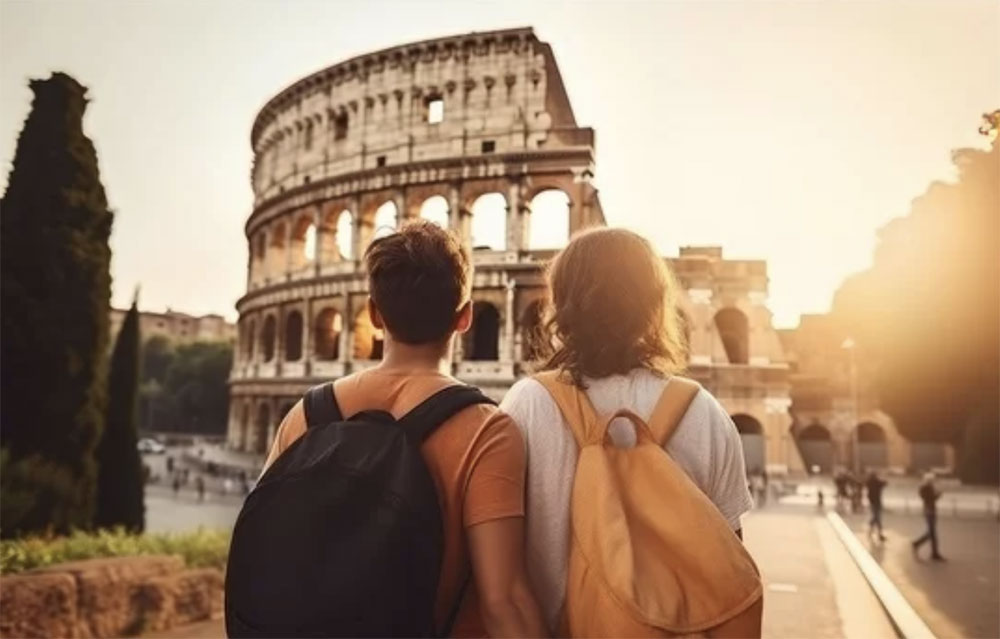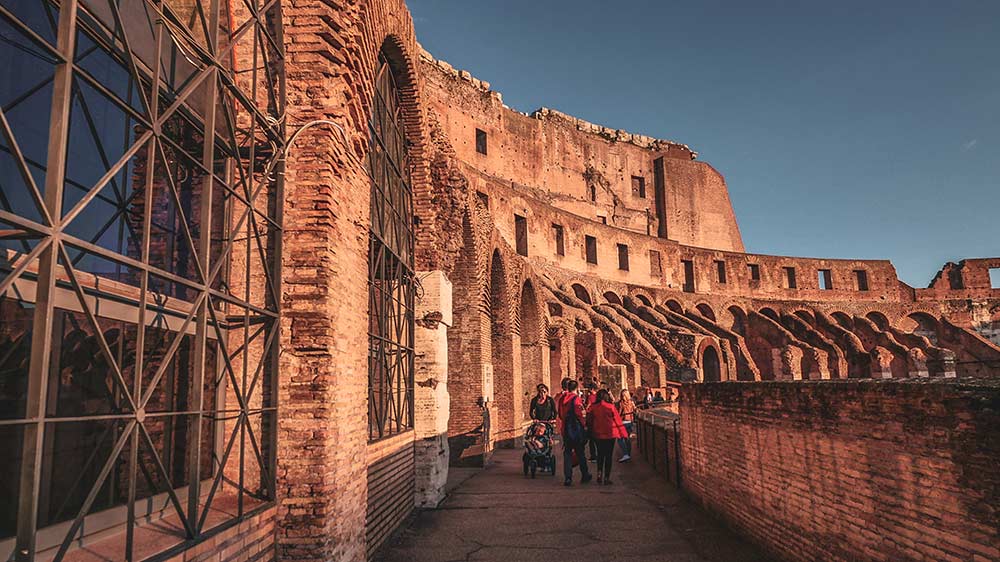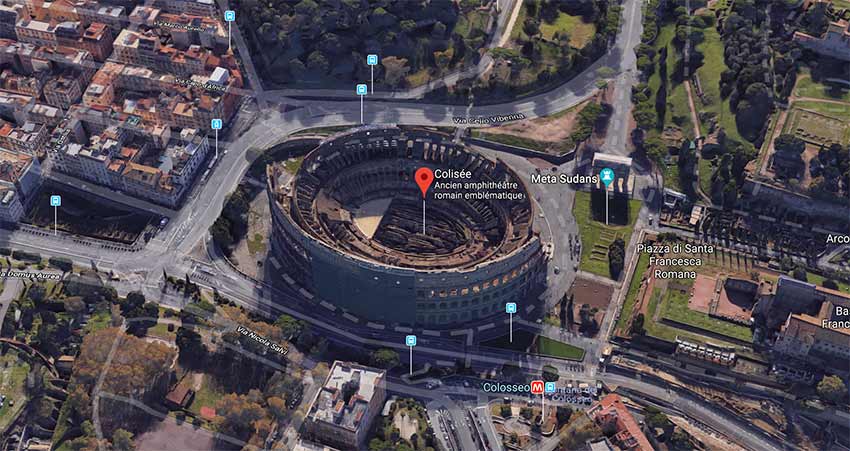Colosseum ticket
tilckets is an online ticketing service provider
The Colosseum, symbol of Rome.
1 | Plan your visit
Did you know? The Colosseum remains one of the most visited monuments in the world. Ongoing preservation efforts have saved much of the structure, although time and pollution have left their mark on its exterior.
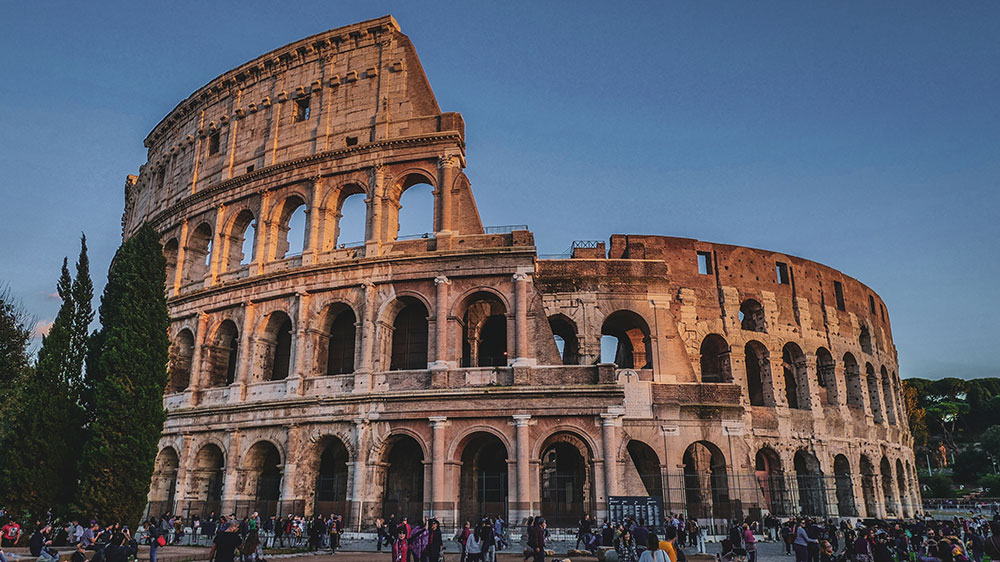
7.6 million visitors a year.
Modern projects seek to strengthen the structure and enhance the visitor experience. Here are a few tips to help you prepare for your visit to the Colosseum.
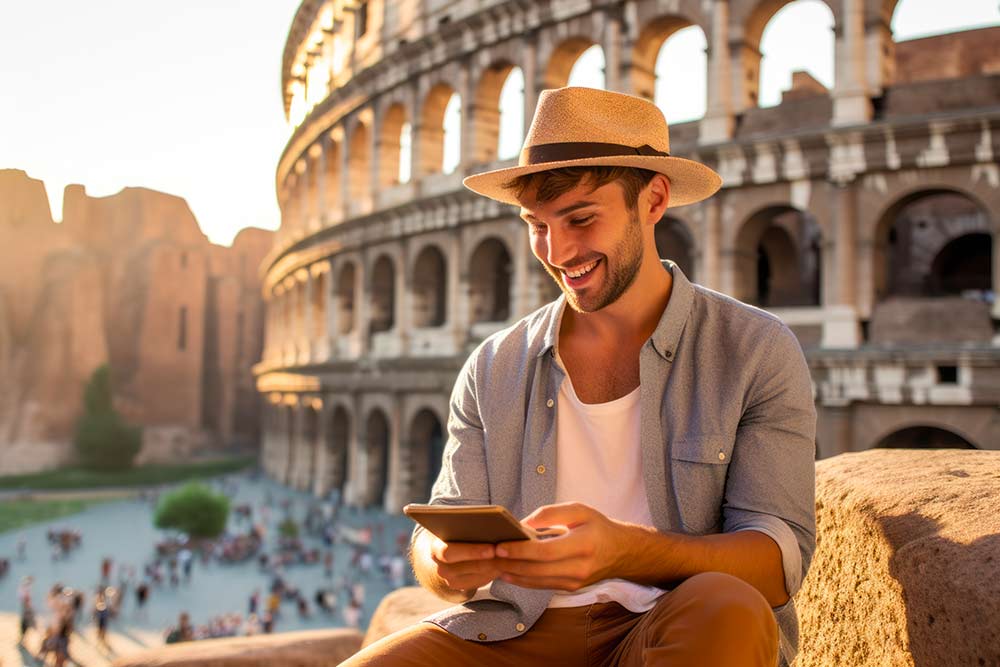
Make the most of your stay in Rome.
1.1 Choosing the date
If you want to discover the Colosseum, it’s essential to choose the date and time slot that best suits your schedule. You should be aware that early morning or late afternoon visits are the least popular time slots. During the festive season, it can sometimes be difficult to get a ticket, so we recommend that you book several days or even weeks in advance to ensure that you have a slot. It is important to know that once you have purchased a Colisée ticket, it cannot be changed or refunded. Your ticket will count towards the visit quotas imposed by the Coliseum.
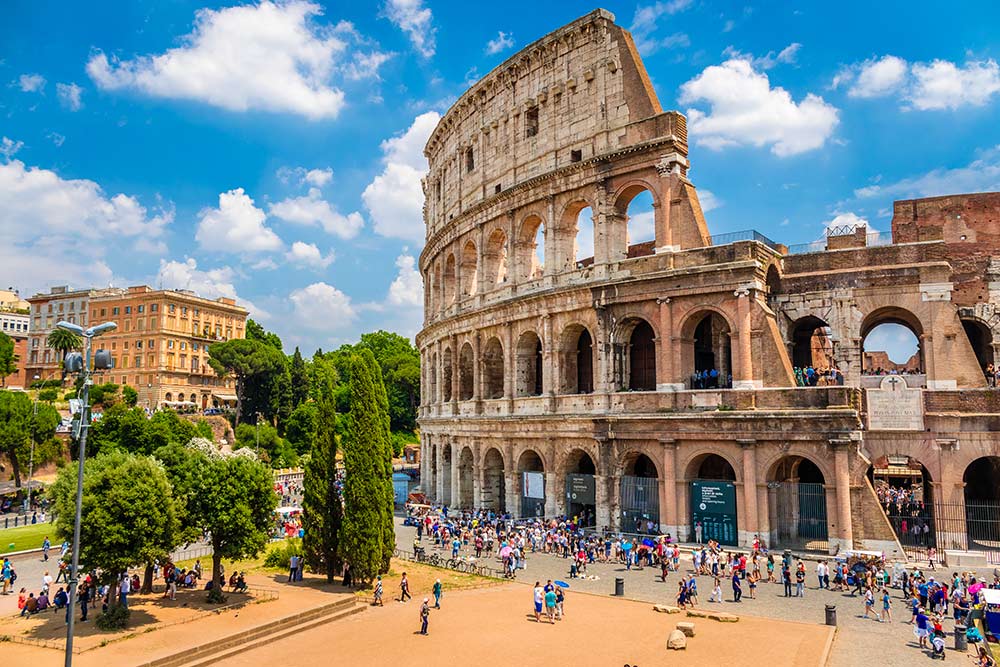
The main entrance is at the “Sperone Valadier”.
1.2 Buying a Colosseum ticket
Before starting your journey to Rome, make sure you book your Colosseum ticket online. This initial step will simplify your access to the site, saving you tedious queues. tilckets allows you to make your reservation online via this site, with numerous visit options via the secure Tiqets platform. Please note that the tilckets site is not the official site but a brand affiliated to Tiqets. Tiqets is one of the Colisée’s partners. Your Colisée ticket will then be sent to you directly by e-mail. You will then be able to present your ticket, either via your smartphone or in printed form, during your visit.

Plan your visit and your time slot.
2 | Before your visit.
2.1 Itinerary
Plan and organise your route to the Colosseum. Use public transport or book a taxi if necessary.
2.2 Dress code
The Colosseum is not a religious site. Nevertheless, you should dress appropriately. Avoid short shorts and high necklines. For a comfortable visit, with your Colosseum ticket, we recommend that you choose comfortable shoes suitable for walking.
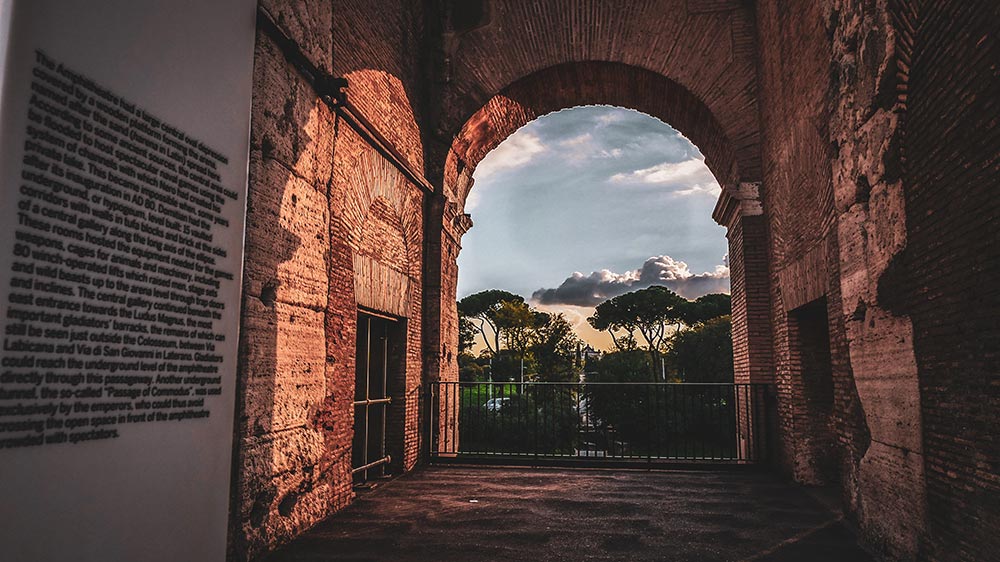
2.3 Visiting time
Allow plenty of time to fully enjoy your visit. Once inside the Colosseum, your time will not be limited and you can take as much time as you need to visit it. This visit will allow you to imagine how the Romans were able to build such an ingenious and durable structure.
3 | Your arrival
3.1 Which way do I enter?
The main entrance to explore the Colosseum is at the “Sperone Valadier”, near the Arch of Constantine.
Prepare your Colosseum ticket when you arrive. Make sure you have your Colosseum ticket to hand. Whether on your phone or in printed form, you’ll be able to enjoy quick access to the Colosseum entry process. The major advantage of booking your Coliseum ticket in advance is that you can avoid the queues as much as possible. So you can start exploring the Colosseum more quickly.
At the entrance to the Colosseum, there are two queues. The queue on the right allows you to pick up your Colosseum ticket at the ticket office while queuing. Waiting time without prior reservation is generally estimated at between 20 and 45 minutes.

Save time with an online Colisée ticket.
The queue on the left is reserved for those who already have a Colisée ticket booked online. The wait is estimated at between 2 and 10 minutes to pass through the security checks. Along with St Peter’s Basilica, the Colosseum is one of the most visited monuments in Rome.
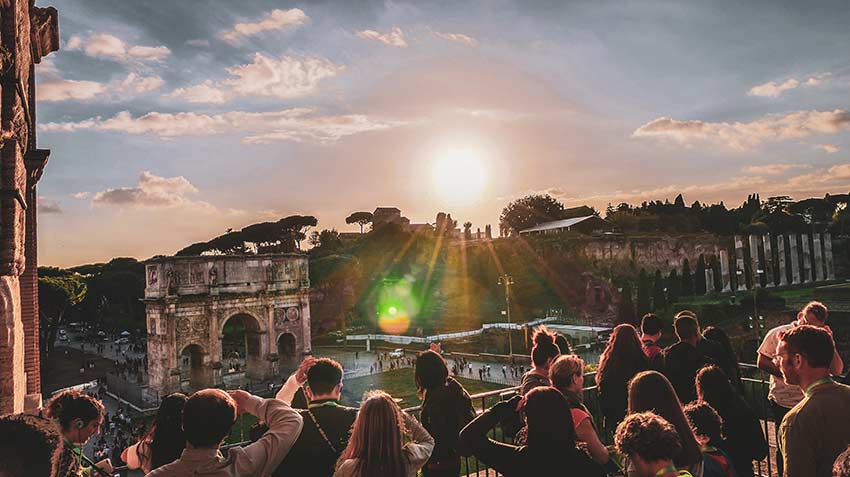
The Roman Forum is included with the Colosseum ticket.
Your Colosseum ticket will also allow you to visit the Roman Forum and Mount Palatine. The Roman Forum and Mount Palatine are located near the entrance to the Colosseum.
3.2 Security
Follow the security instructions and at the security checkpoint. As at the airport, you must leave your prohibited items in the lockers if necessary. At the Coliseum, there are no lockers available for your suitcases, handbags or backpacks.
4 | During your visit
4.1 Your comfort
Bring a bottle of water and make sure you apply sun protection, especially on sunny days. It’s best to visit the Colosseum at the end of the day, as the sunset will provide beautiful light for your photos. Your Coliseum ticket will enable you to make the most of your experience.
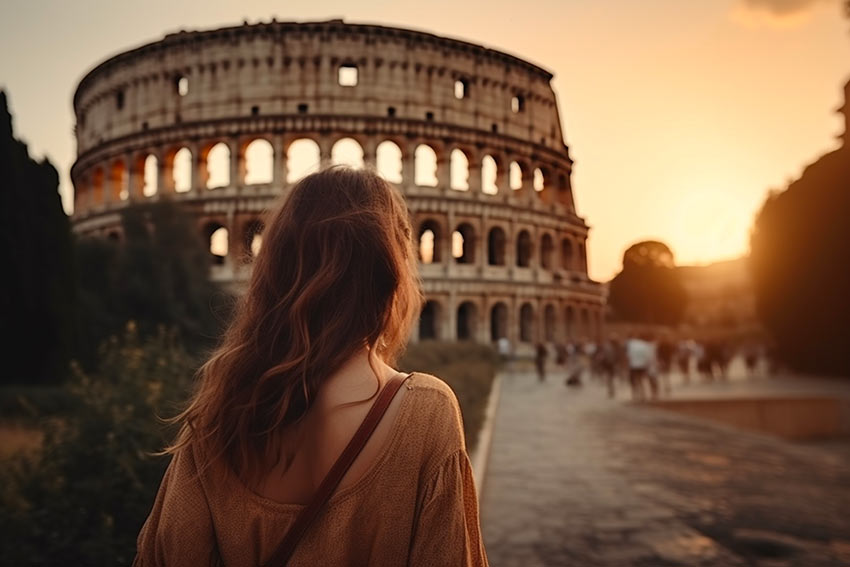
The best light is at the end of the day.
4.2 A few visiting rules
During your visit, please respect the rules of the site. Avoid touching the ancient structures, and contribute to the preservation of the Colosseum by being a respectful visitor. The use of a camera is encouraged to capture the grandeur of the Colosseum. However, please observe the site’s photography rules, to ensure that you preserve this historic marvel without disturbing visitors to the site – no flashes or tripods. By following these few tips, the Colosseum will continue to be preserved for future generations.
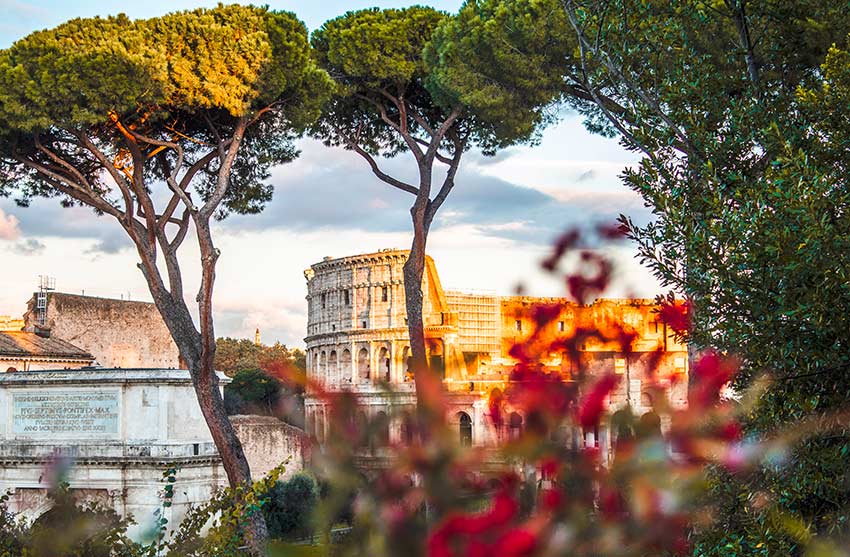
View of the Colosseum from the Roman Forum.
4.2 Discovering the spaces
Explore the different parts of the Colosseum, the tribunes, the stands, the Belvedere, the Arena and the Hypogeum, depending on your ticket type. Follow a logical itinerary to make sure you don’t miss anything.
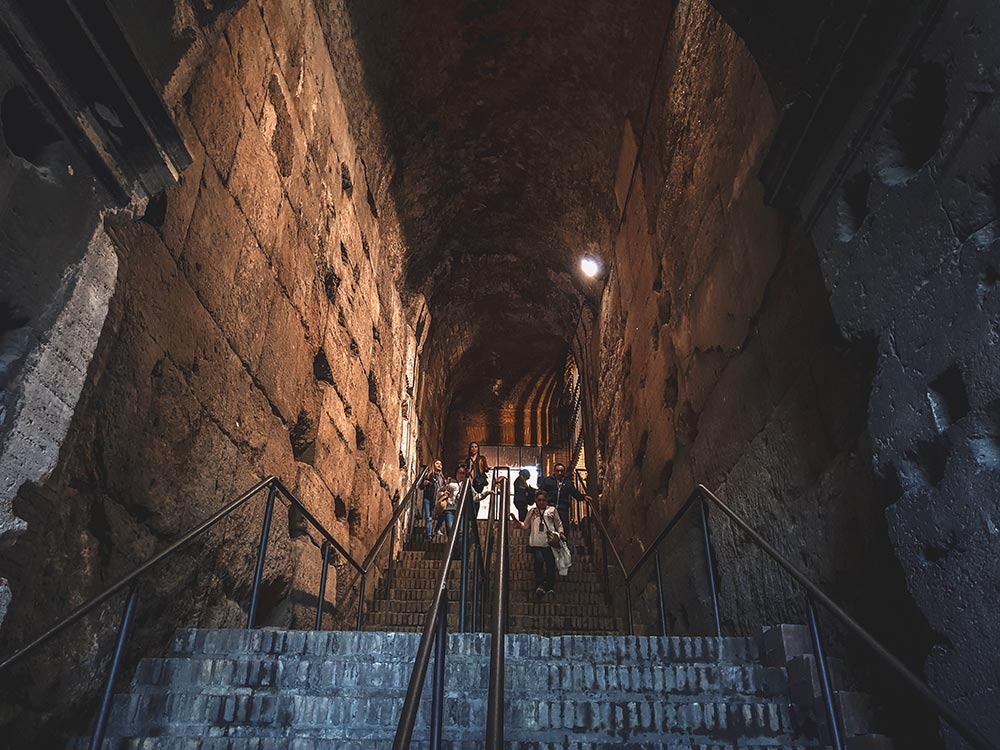
5 | The History of the Colosseum
5.1 A 2100-year-old marvel
As you know, the Colosseum alone is a priceless historical treasure, with its iconic amphitheatre bearing witness to the greatness of the Roman Empire.
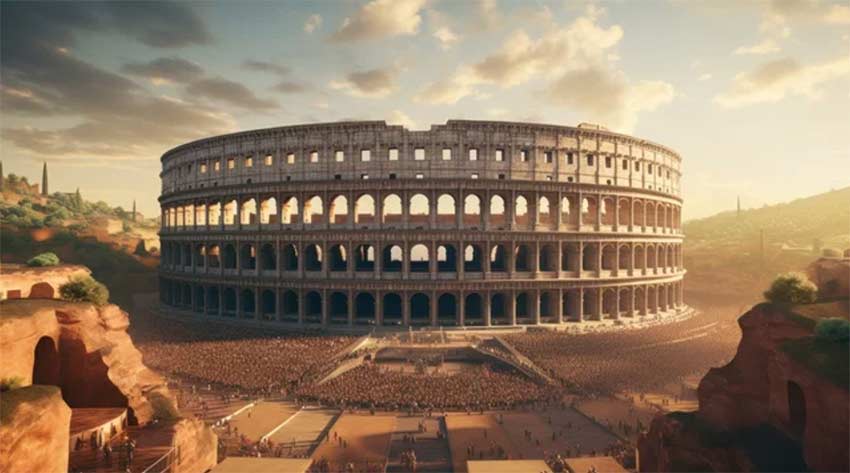
The Colosseum in 80 AD.
The Colosseum, the Flavian amphitheatre, is the greatest architectural marvel of the Roman Empire. Located in the heart of Rome near the Roman Forum, it was built in 70 AD at the instigation of the Emperor Vespasian (Flavian family). The Colosseum was designed to demonstrate the might of Rome. Building the largest amphitheatre in the Empire to stage ever more spectacular games and performances is what you can discover with your Colosseum ticket.
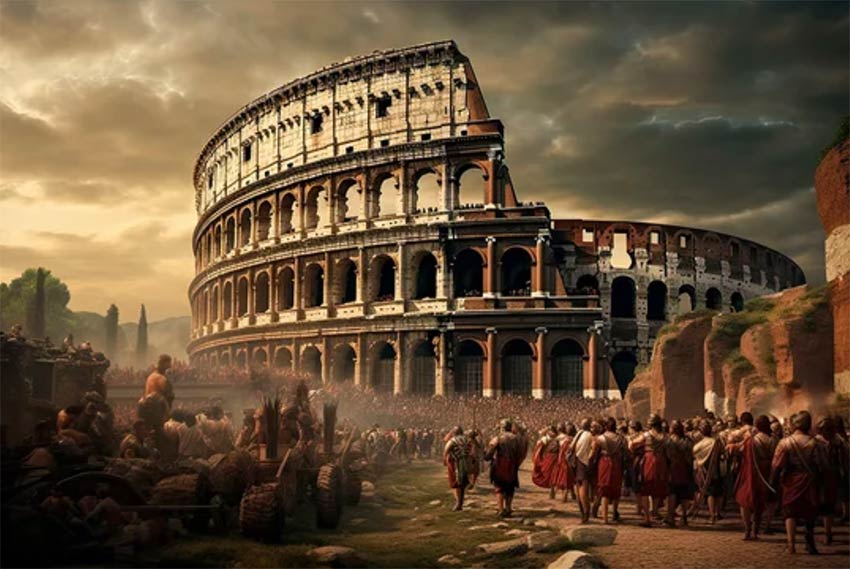
The Colosseum was completed in 80 AD.
5.2 Gladiatorial games and fights
When the Colosseum was inaugurated, Titus held a Naumachia. He decided to create a gigantic pool to recreate the famous naval battle between Corinth and Corcyra.
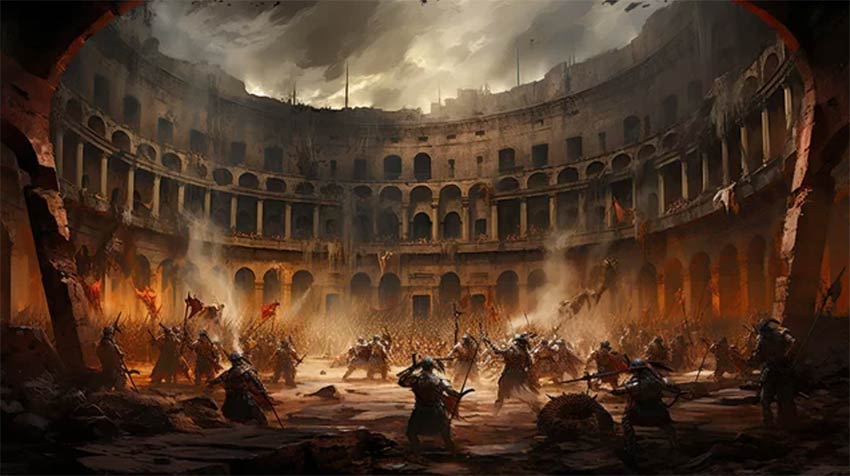
Colosseum famous for its Gladiator fights.
The Colosseum became famous for its Gladiator fights, its spectacular Venationes (animal fights with tigers and lions), its mythological re-enactments and its executions.
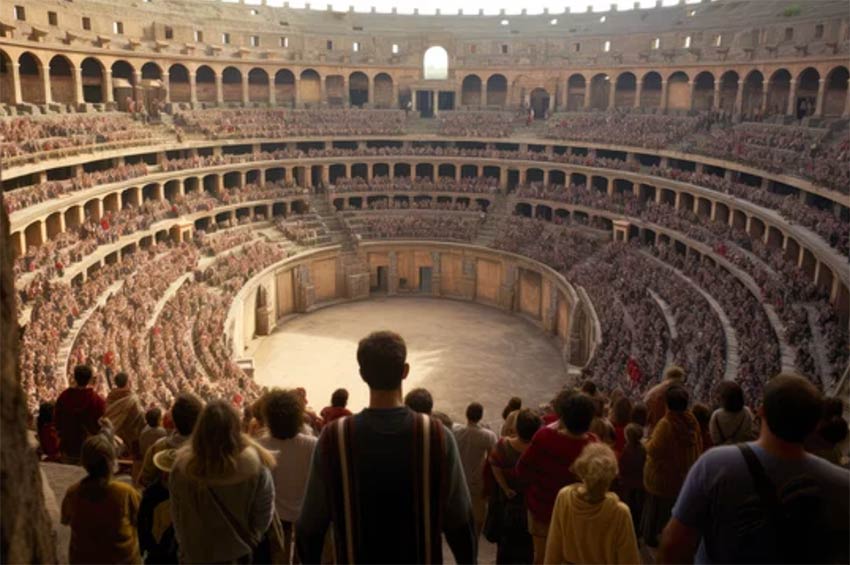
The Colosseum, a real Roman attraction.
These events were designed to entertain the Roman people while demonstrating imperial power.
5.3 The end of spectacles and new uses
During the Middle Ages, the bloody spectacles of the Colosseum were abandoned. The amphitheatre found new uses, such as housing, craftsmen’s workshops and even a fortress. Certain architectural elements were recycled in the construction of St Peter’s Basilica and other buildings.
5.4 Rediscovery in the Middle Ages
In the 15th century, with the advent of the Renaissance, the Colosseum attracted new interest.
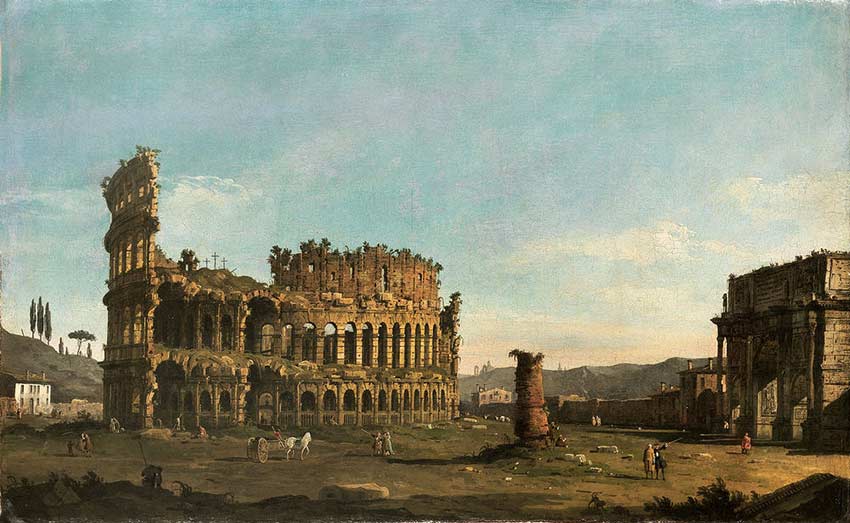
The Colosseum was gradually plundered for its stones.
The popes initiated conservation and restoration projects to preserve this Roman heritage. However, much of the amphitheatre was plundered to provide marble for other buildings.
6 | Architecture, innovations
6.1 A journey through its architecture
The Colosseum, also known as the Amphitheatrum Flavium in Latin, stands as one of the most emblematic monuments in Rome and the world.
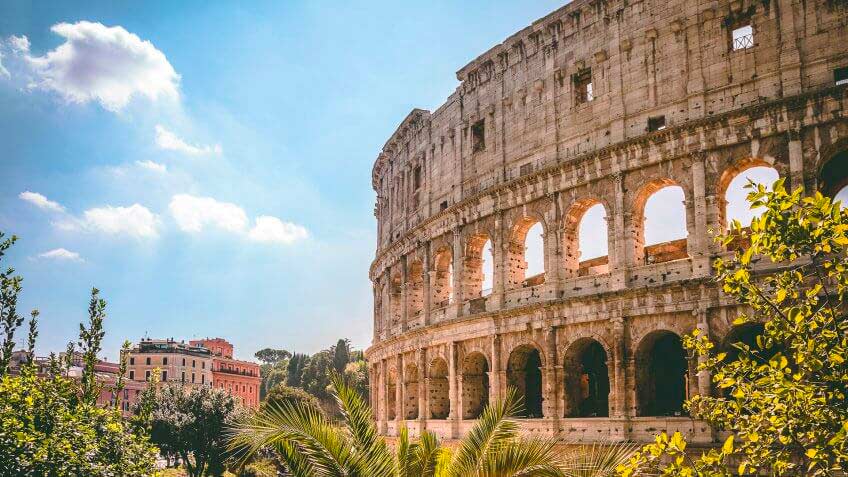
Its fascinating history and monumental architecture have captured the imagination of visitors for centuries, making the Colosseum an impressive testament to Roman engineering and the grand spectacles of antiquity.
6.2 Foundations under the Flavian Empire
The adventure of the Colosseum began under the reign of Emperor Vespasian of the Flavian dynasty around 70-72 AD. His successor, Emperor Titus, inaugurated the amphitheatre in 80 AD, while Domitian, another emperor of the dynasty, made subsequent modifications.
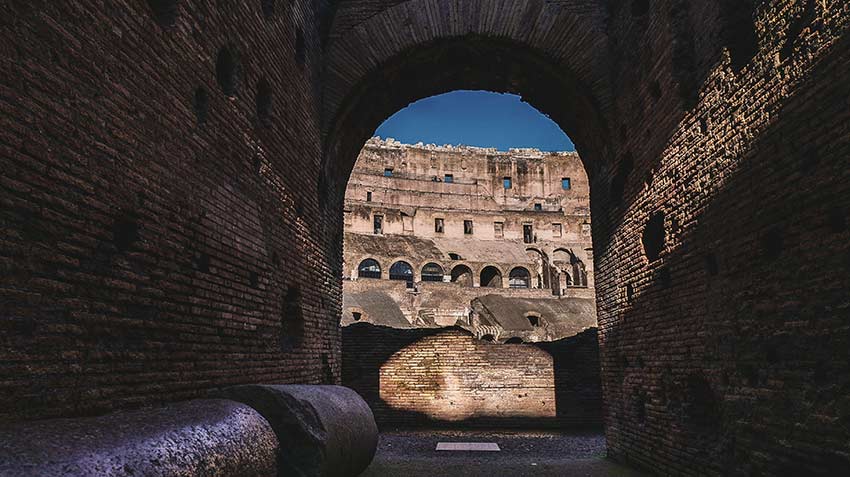
The Colosseum, located in the heart of Rome, embodies the grandeur of that era and the prosperity of the Roman Empire.
6.3 Design and dimensions
The architecture of the Colosseum stands out as a remarkable example of advanced Roman engineering.
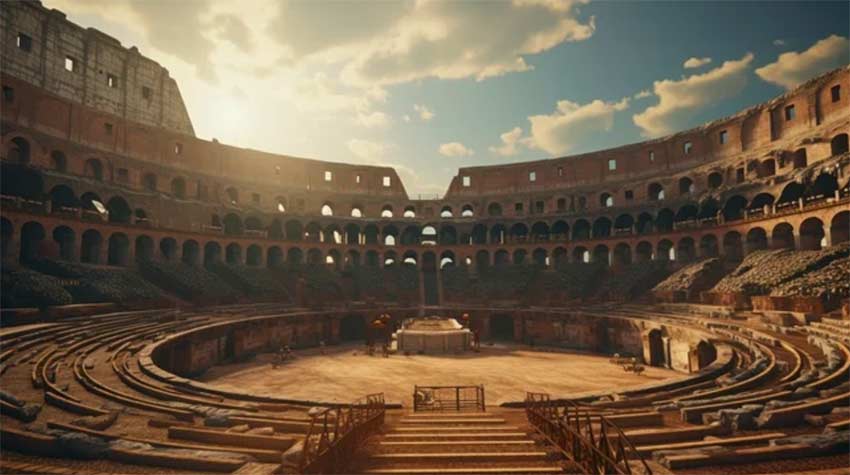
Built to accommodate up to 50,000 spectators, the amphitheatre has an elliptical shape and spectacular dimensions, measuring around 189 metres long, 156 metres wide and 50 metres high. It covers an area of 2.4 hectares.
The Colosseum consists of four tiers of terraces, each decorated with classical architectural orders: Doric on the ground floor, Ionic on the second, Corinthian on the third, and an attic above.
6.4 The Arena and the Hypogeum system
The central arena, measuring around 83 metres by 48 metres, was covered with wooden planks and sand for performances. Beneath this arena lay the hypogeum system, a complex network of passageways and cages used to house animals and gladiators before the shows began. Lifts and pulleys were used to hoist these participants into the arena in spectacular fashion.
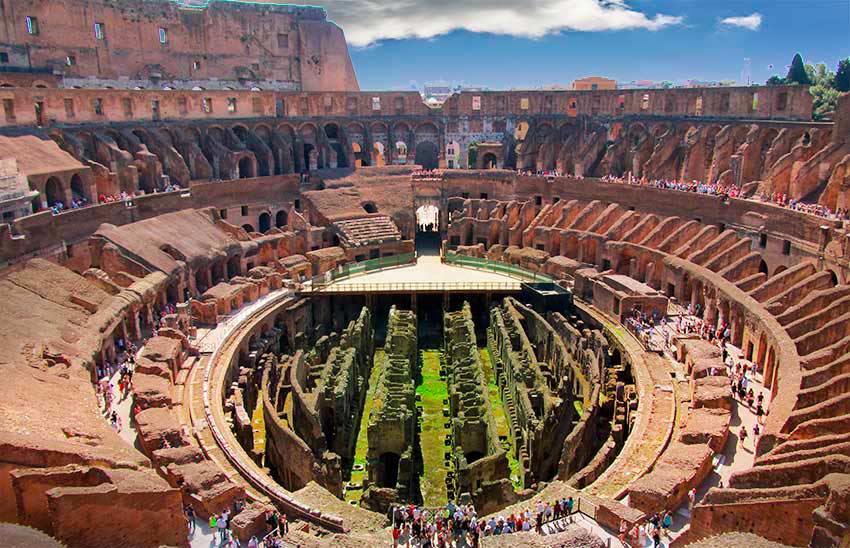
The hypogeum is the network of tunnels.
The hypogeum is still visible when you visit the Colosseum, and you can still see the many corridors and tunnels that lead underneath the Arena. Recently, the government approved the construction of a 3,000 m² retractable wooden floor in the arena above the hypogeum.
6.5 Changes over the centuries
On the outside, the Colosseum has an impressive façade. The lower part, made of travertine, a limestone, contrasts with the upper part, made of brick and covered in marble.
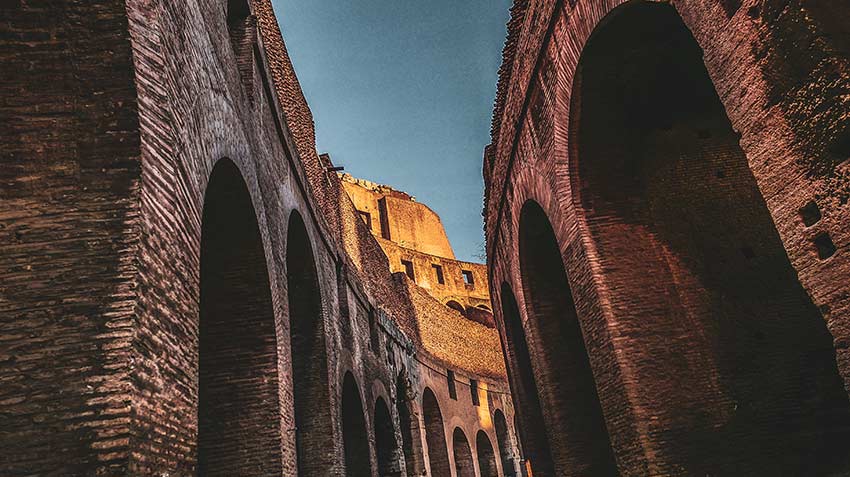
The arches, typical of Roman architecture, support the tiers of seats. Originally, a huge canvas called a velarium could be deployed to protect the audience from the sun. Over the centuries, the Colosseum has undergone various modifications and restorations. Earthquakes in the Middle Ages caused damage to the structure, and some parts were reused in the construction of other buildings. Despite this, the Colosseum’s monumental footprint has stood the test of time.
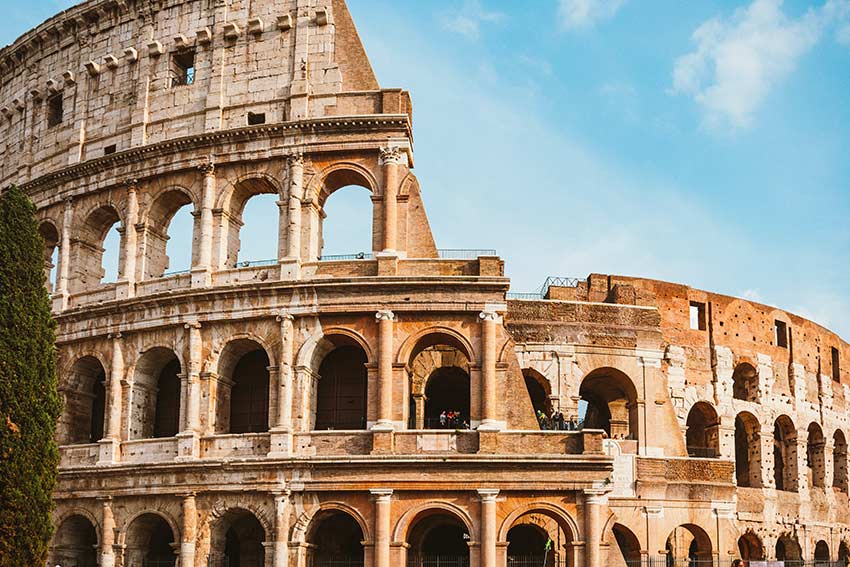
Enjoy your visit!
The Colosseum, a true masterpiece of Roman engineering, continues to amaze the world with its fascinating history and grandiose architecture. A testament to Rome’s glorious past, it remains a powerful symbol of human ingenuity and the grandeur of the Roman Empire. As the Colosseum survives the centuries, it continues its captivating story, linking the past to the present and inspiring future generations. The Colosseum ticket will play a central role in simplifying your visit, with its queue-cutting access. By following tilckets’ advice you should be able to organise an enjoyable and well-planned visit to the Colosseum.
Schedules:
Open every day.
July – August: 8:30 AM to 9:45 PM
September – June: 8:30 AM to 7 PM
Closing:
January 1, May 1, December 25.
Time to expect:
Audio-guided circuit Tour: 1h45.
By metro:
MEB1 Colosseo Station (2 min.)
MEA Manzoni Station (16 min. )
By tram:
Lines 3 and 8 Colosseo Station (3 min.)
By bus:
Lines 51,75, 85, 87, 118, N2.
Questo sito è affiliato alla piattaforma Tiqets. Tiqets è uno dei partner ufficiali del monumento per la rivendita dei biglietti. Questo sito non è il sito ufficiale; i nostri biglietti funzionano con la piattaforma Tiqets, partner del Colosseo.
